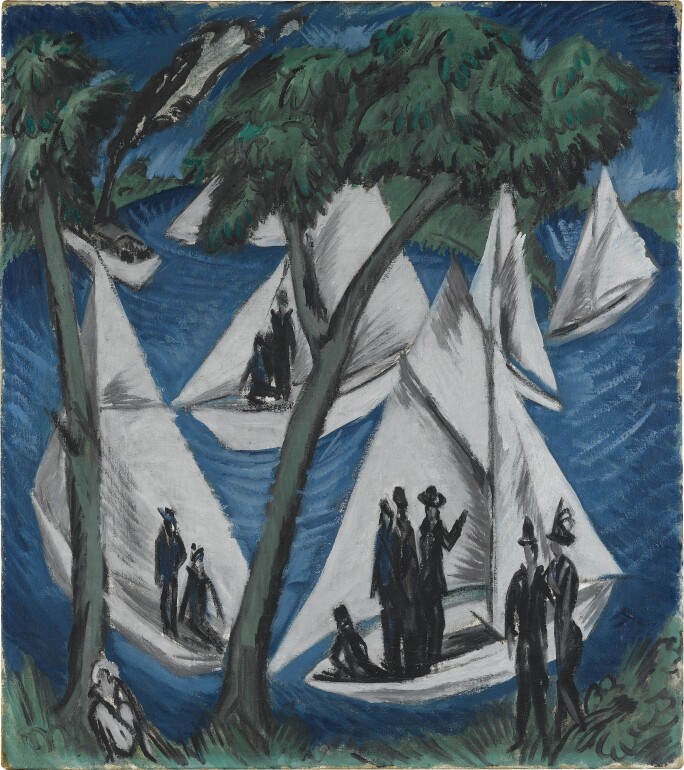Segelschiffe (Auf der Flensburger Förde) executed in 1922 is an outstanding example of Erich Heckel’s deep relationship with nature reflected by a poetic expression of bright colours, windswept energy and light-transmitting mood. The painting depicts a scene along the Flensburg Fjord at the western Baltic Sea, where Heckel had set up his summer workshop after the war.

As co-founder of one of the most influential artist group of it’s time, Die Brücke (1905-1913), Erich Heckel is known as one of the most important protagonists of German Expressionism. The Künstlergruppe was founded together with his friends and contemporaries Ernst Ludwig Kirchner, Karl Schmidt-Rottluff and Fritz Bleyl, and was influenced by acclaimed post-impressionist painters such as Vincent Van Gogh and Edvard Munch. They were later joined by the renowned art colleagues Max Pechstein, Emil Nolde and Otto Mueller. Die Brücke is typically seen as the initiator of German Expressionism, setting the focus on the intensity of colour and its strong contrast, abandoning details for bold forms.
The year 1913, when the group formally dissolved, marked a turning point in Heckel’s oeuvre. Following his encounter with Lyonel Feininger and further members of another pioneering Künstlergruppe Der Blaue Reiter, his landscapes were progressively characterised by a distinctly poetic quality and led to a colourfully restrained formal language, showing the groups increasing influence.
After the war in 1918 Heckel returned to Berlin where he remained until 1944. However, he spent most of his summers on the Flensburg Fjord where he constantly found his inspirations for his landscapes such as the present work.
Segelschiffe (Auf der Flensburger Förde) with its atmospheric seascape and cloudy sky, expressive in the use of colours and form, is a particularly vivid example of Heckel’s post war works and his preference for landscape themes. After painting en plein air was prohibited due to military considerations during the war and during which his canvases emerged as a substitute for his experiences with nature, his post war works like the present canvas may be seen as a celebration of Heckel reconnecting with nature, combining expressive elements that were characteristic of his artistic work in the period before the war with an evolved softened formal language characterised by flowing colour gradients. In the 1920s Heckel resolutely intensified his preoccupation with the theme of landscape, in particular the recurring experience of the costal landscape of Schleswig-Holstein and its variety of changing light alongside the sea. He began to concentrate to a greater extent on the representation of light within his landscape depictions. One can described light as a leitmotif of his art within his oeuvre of the time. Notably in the present work, Heckel transforms the subject with its narration of light into a vivid and lively experience of nature for the observer. As the light strokes break through the clouds and reflect on the water, creating different shadows within the waves and the sheds of the sails which are lying in the direction of the wind, by this Heckel creates an extraordinary atmosphere of movement in the sky and the water conveying the pure feeling of nature, feeling the breeze and the light at this depicted moment.
As stated by Paul Vogt, Erich Heckel’s biographer: “You have to experience this immense expanse of water to understand that it reflects light like a giant mirror, with an intensity that is not limited to the coastline, but also extends to the nearest areas of land, so that the proximity of the sea can be seen in the high clear air.”
In 1937, hundreds of works by Erich Heckel were confiscated from German museums and private collections by the national socialists and his works were declared as degenerate art. His studio, together with many of his works were then also destroyed during an air raid during the Second World War in 1944. Today, Heckel’s work is represented in many major collections with a focus on German Expressionism throughout the world.